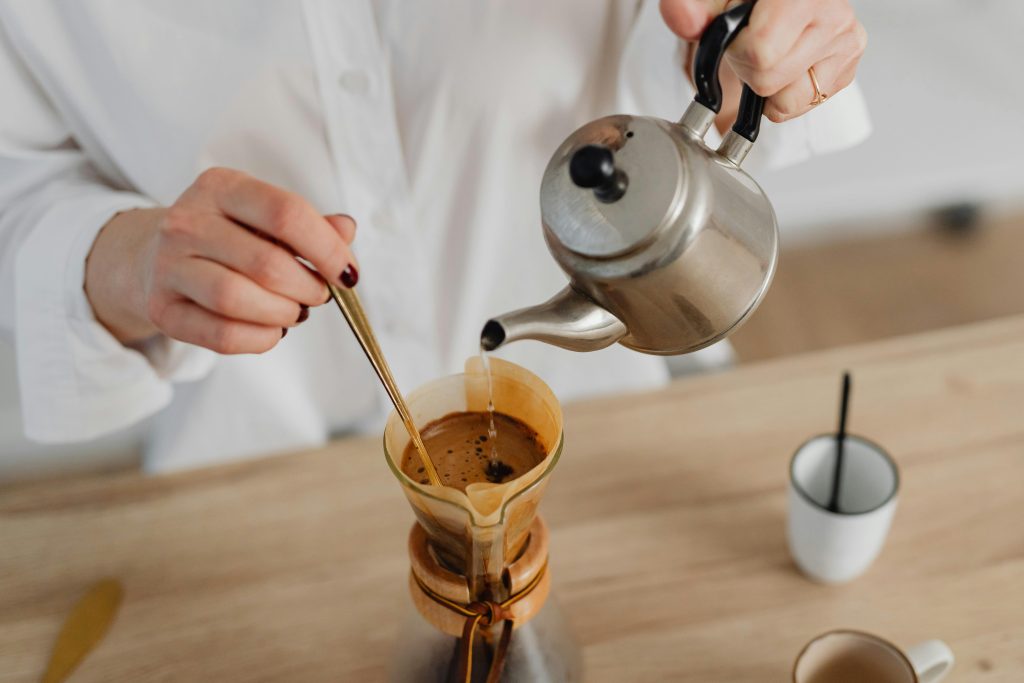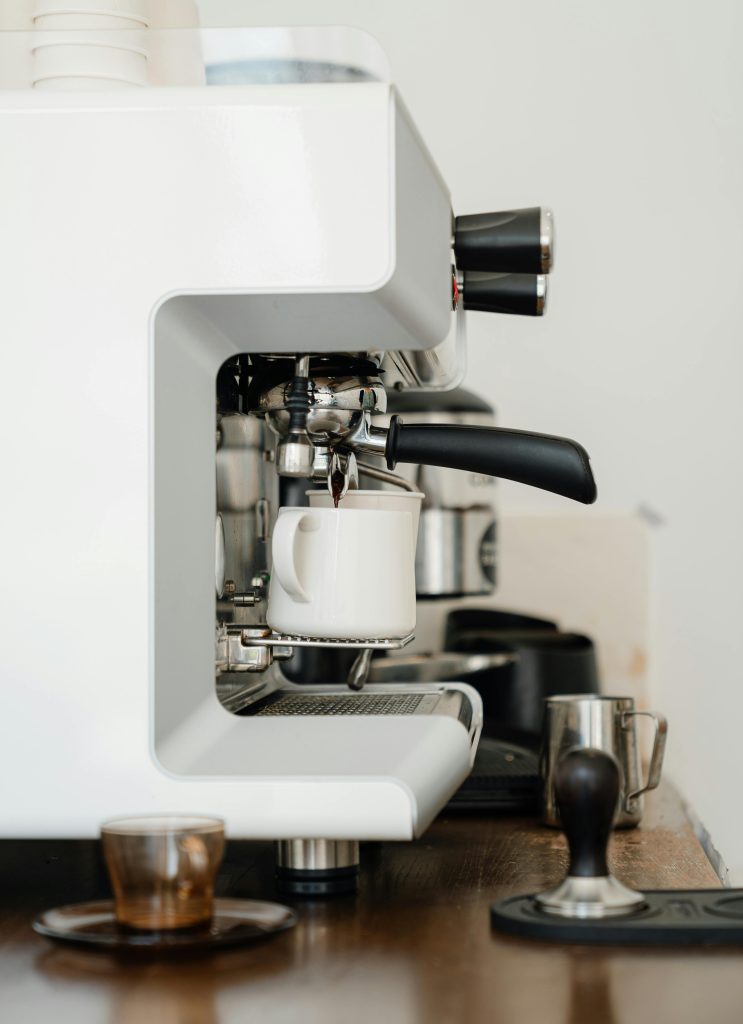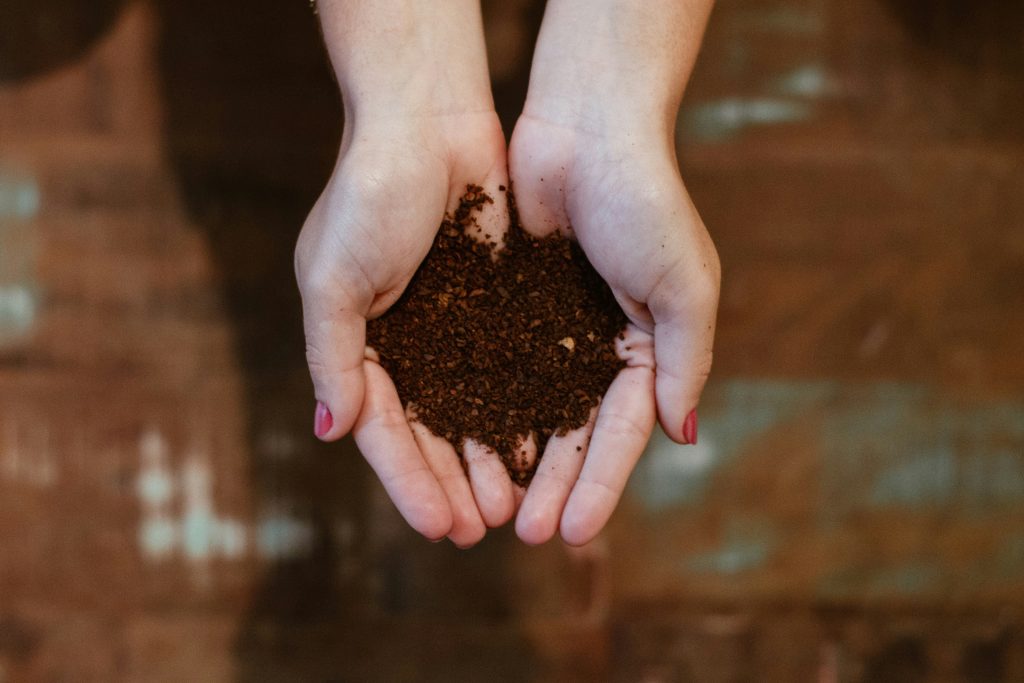Choosing Organic Coffee Beans
When it comes to selecting your coffee beans, opting for organic varieties can make a positive impact on both your health and the environment. Organic coffee beans are cultivated without the use of synthetic pesticides or fertilizers, promoting soil health and biodiversity while also reducing exposure to harmful chemicals in your daily cup of coffee. By choosing organic coffee beans, you are supporting sustainable farming practices that prioritize the well-being of both the consumers and the planet.
Furthermore, organic coffee beans are often grown using environmentally friendly methods that conserve water and promote soil conservation. This means that by choosing organic coffee beans, you are contributing to the preservation of natural resources and promoting a more sustainable coffee industry. With a wide range of organic coffee options available on the market today, making the switch to organic beans is a simple yet impactful choice for those looking to enjoy their daily cup of coffee in a more conscious and environmentally friendly way.

Investing in a Reusable Coffee Filter
Investing in a reusable coffee filter can be a simple yet impactful way to reduce waste from single-use paper filters. By opting for a reusable filter made from materials such as stainless steel or mesh, coffee enthusiasts can enjoy their daily brew while minimizing their environmental footprint. These filters are durable and easy to clean, making them a cost-effective and eco-friendly choice for those looking to make their coffee routine more sustainable.
Not only do reusable coffee filters help in reducing waste, but they can also enhance the flavor of your coffee. Unlike paper filters, which can absorb some of the natural oils from the coffee beans, reusable filters allow these oils to pass through, resulting in a richer and more aromatic cup of coffee. Additionally, using a reusable filter means you won’t have to worry about running out of paper filters, making it a convenient and reliable option for coffee lovers who want to enjoy their favorite brew with minimal impact on the environment.

Opting for a Manual Coffee Brewing Method
One of the ways to elevate your coffee brewing experience is by opting for a manual method. Manual brewing methods, such as pour-over or French press, allow for greater control over the brewing process. This hands-on approach not only allows you to fine-tune the brewing variables like water temperature and extraction time but also brings a sense of satisfaction and mindfulness to your coffee routine.
Moreover, manual brewing methods can enhance the flavors of your coffee by showcasing its unique characteristics. By manually pouring water over the coffee grounds or plunging the French press, you can extract the optimal flavors and aromas from the beans. This method often results in a richer and more nuanced cup of coffee compared to automatic brewing techniques. Additionally, manual brewing is a more sustainable choice as it typically requires less electricity and disposable materials, making it a great option for eco-conscious coffee enthusiasts.

Reducing Water Waste in Coffee Brewing
When it comes to reducing water waste in coffee brewing, there are several strategies that coffee enthusiasts can employ to make a positive impact. One of the most straightforward ways to minimize water waste is to measure out the precise amount of water needed for each brew. By accurately measuring the water instead of simply eyeballing it, you can ensure that you are not using more water than necessary, thereby reducing wastage.
Additionally, investing in a high-quality coffee maker with programmable settings can also help in controlling water usage. Some advanced coffee machines offer features that allow you to adjust the water flow and temperature, providing more customization options for your brew. By utilizing these settings effectively, you can optimize water usage and make your coffee brewing process more efficient and eco-friendly.
Exploring Energy-Efficient Coffee Makers
When it comes to making a conscious choice for a more sustainable coffee brewing experience, opting for energy-efficient coffee makers is a step in the right direction. These innovative machines are designed to minimize energy consumption without compromising on the quality of your brew. By investing in an energy-efficient coffee maker, you not only reduce your carbon footprint but also save on energy costs in the long run.
Energy-efficient coffee makers come in various styles and sizes, catering to different brewing preferences. Whether you prefer a classic drip coffee maker, a sleek espresso machine, or a convenient single-serve brewer, there are energy-efficient options available to suit your needs. With features such as programmable settings, thermal carafes, and automatic shut-off functions, these eco-friendly coffee makers offer both convenience and sustainability in one appliance.

Composting Coffee Grounds
Coffee grounds are a rich source of nitrogen, making them a valuable addition to compost bins or piles. When added to compost, coffee grounds help improve soil structure and promote healthy microbial activity. Their decomposition process adds essential nutrients to the soil, making them a popular choice for eco-conscious gardeners looking to enrich their gardens naturally.
Composting coffee grounds is a simple and sustainable way to reduce waste and support a circular economy. With the rise of home composting methods, coffee grounds offer an excellent opportunity to divert organic material from landfills and turn it into a beneficial resource for gardens and plants. By incorporating coffee grounds into your composting routine, you can contribute to both reducing waste and enhancing the health of your soil.

Using Non-Toxic Cleaning Products for Coffee Equipment
When it comes to keeping your coffee equipment clean and well-maintained, opting for non-toxic cleaning products is not only beneficial for your health but also for the environment. Traditional cleaning agents can leave harmful residues on your coffee maker and accessories, affecting the quality of your brew as well as posing health risks. By choosing non-toxic alternatives, you can ensure that your equipment is free from harsh chemicals, promoting a safer brewing experience.
Many non-toxic cleaning products are readily available on the market or can be easily made at home using simple ingredients like vinegar, baking soda, and lemon juice. These natural cleaners are effective in removing coffee stains, buildup, and odors without the need for harsh chemicals. Regularly cleaning your coffee equipment with non-toxic products not only maintains its performance but also prolongs its lifespan, allowing you to enjoy delicious and eco-friendly coffee for years to come.
Supporting Fair Trade Coffee Brands
When it comes to your daily cup of coffee, choosing to support fair trade coffee brands can make a significant impact on the lives of coffee farmers and their communities. Fair trade practices ensure that farmers receive fair wages for their work and operate under safe working conditions. By purchasing coffee from fair trade brands, you are contributing to a more sustainable and ethical coffee industry.
In addition to supporting the livelihoods of coffee farmers, fair trade coffee brands often prioritize environmental sustainability in their farming practices. Many fair trade certifications require farmers to adhere to certain environmental standards, such as using organic farming methods and conserving water resources. By opting for fair trade coffee, you can enjoy your favorite brew knowing that it was produced in a way that minimizes harm to the environment while supporting the well-being of those who grow it.
Minimizing Single-Use Coffee Pods
Single-use coffee pods have gained popularity for their convenience but have come under scrutiny for their environmental impact. These pods are typically made from a combination of plastic, aluminum, and organic material, making them difficult to recycle and often ending up in landfills. As a conscious consumer, there are several ways to minimize the use of single-use coffee pods and reduce the waste they generate.
One solution is to opt for reusable coffee pods that can be filled with your choice of ground coffee. These eco-friendly alternatives not only help in cutting down on waste but also allow you to customize your coffee blend to your preference. Investing in a refillable pod system can not only save you money in the long run but also contribute to a more sustainable coffee-drinking habit. By making this simple switch, you can enjoy your daily cup of coffee with a clearer conscience knowing you are reducing your environmental footprint.
Repurposing Coffee Packaging
One creative way to give a second life to coffee packaging is by upcycling it into unique and practical items. For instance, you can repurpose coffee bags or tins as storage containers for small items like pens, craft supplies, or even as plant pots for small succulents. The sturdy material of coffee packaging makes it ideal for DIY projects that require durable containers. By transforming these coffee packages into useful everyday items, you not only reduce waste but also add a personal touch to your living space.
Another innovative way to repurpose coffee packaging is by using it for art and craft projects. The vibrant designs and patterns found on coffee bags and tins can be creatively incorporated into collages, scrapbooks, or handmade cards. By integrating these unique visuals into your creative ventures, you give a new aesthetic dimension to your artwork while also promoting eco-conscious practices. Repurposing coffee packaging in art projects not only showcases your artistic flair but also serves as a reminder of the importance of sustainability in everyday choices.
Experimenting with Homemade Coffee Syrups and Creamers
Making your own coffee syrups and creamers at home can be a fun and creative way to enhance your daily coffee routine. By experimenting with different flavors and ingredients, you can customize your drinks to suit your own preferences. Whether you prefer a classic vanilla syrup or a unique lavender creamer, the possibilities are endless when it comes to homemade coffee additions.
Creating your own syrups and creamers also allows you to control the quality of ingredients used. By using natural sweeteners and fresh flavors, you can avoid the artificial additives and preservatives often found in store-bought options. Plus, making these items at home can be a more sustainable choice, as you can reduce packaging waste and opt for organic ingredients when possible.
Reducing Coffee Waste by Brewing the Right Amount
One effective way to reduce coffee waste is to brew only the amount that you actually need. Consider your serving size and refrain from brewing excess coffee that might end up being poured down the drain. By being mindful of how much coffee you truly require, you can cut down on unnecessary waste and ensure that each cup is freshly brewed to perfection.
Brewing the right amount of coffee not only helps in minimizing wastage but also contributes to a better coffee-drinking experience. Freshly brewed coffee tends to have a superior taste compared to reheated or leftover batches. By brewing only what you need, you can savor the rich flavors and aromas of your coffee while also doing your part in reducing unnecessary waste in your daily routine.
Exploring Local Coffee Roasters
Supporting local coffee roasters is an excellent way to embrace quality, sustainability, and community. By choosing to purchase coffee from roasters in your area, you not only support small businesses but also reduce the carbon footprint associated with long-distance transportation. Local roasters often prioritize sourcing beans from ethical and transparent supply chains, ensuring that you are getting a product that is not only delicious but also produced with integrity.
Additionally, exploring local coffee roasters allows you to connect with the art and craft of coffee production on a more intimate level. These roasters often take great care in selecting beans, roasting them to perfection, and offering unique flavor profiles that showcase the diversity of coffee. Visiting a local roastery can provide insight into the process behind your morning cup of coffee, fostering a deeper appreciation for the beverage and the hard work that goes into producing it.
Investing in a Quality Coffee Grinder
When it comes to elevating your coffee brewing experience at home, investing in a quality coffee grinder is essential. A high-quality grinder can make a significant difference in the flavor and aroma of your coffee by ensuring a consistent grind size. This consistency is crucial for extracting the full range of flavors from your coffee beans, whether you prefer a coarse grind for French press or a fine grind for espresso.
In addition to improving the taste of your coffee, a quality grinder also gives you more control over the brewing process. With the ability to adjust the grind size to suit different brewing methods, you can customize your coffee to your preferences. Whether you enjoy a bold and robust cup or a smooth and mellow brew, a quality grinder allows you to fine-tune your grind to achieve the perfect balance of flavors in every cup.
Choosing Eco-Friendly Coffee Cups and Mugs
When it comes to selecting eco-friendly coffee cups and mugs, opting for materials such as glass, ceramic, or stainless steel can significantly reduce the environmental impact of your coffee consumption habits. These reusable options not only help in minimizing single-use plastic waste but also provide a durable and stylish way to enjoy your favorite brew on the go or at home.
Moreover, investing in coffee cups and mugs that are BPA-free and free of harmful chemicals ensures that your health is not compromised while savoring your daily dose of caffeine. By making a conscious choice to switch to eco-friendly alternatives, you can contribute to the global efforts in reducing the accumulation of non-biodegradable waste in landfills and oceans.

Exploring Alternative Milk Options for Coffee
When it comes to adding a creamy touch to your coffee, alternative milk options are becoming increasingly popular. Whether you’re looking to avoid dairy, reduce your environmental footprint, or simply explore new flavors, there is a wide array of choices available. From almond and soy milk to oat and coconut milk, each alternative option brings its own unique taste and texture to your daily cup of coffee.
Experimenting with alternative milk options can introduce you to a whole new world of flavors and textures that can complement and elevate your coffee experience. Many alternative milks are available in various flavors, such as vanilla or chocolate, allowing you to customize your coffee to suit your preferences. Additionally, alternative milks are often lower in calories and saturated fats compared to traditional dairy milk, making them a healthier choice for those watching their waistline or trying to maintain a balanced diet.
Reducing Carbon Emissions in Coffee Production
One impactful way to reduce carbon emissions in coffee production is through implementing agroforestry practices. By planting trees alongside coffee crops, the shade provided can help decrease the need for synthetic fertilizers and pesticides, thus lowering greenhouse gas emissions from chemical usage. Additionally, these trees can sequester carbon dioxide from the atmosphere, acting as a natural carbon sink.
Another effective strategy is promoting biodiversity on coffee farms. Diverse ecosystems support ecological balance, reducing the reliance on chemical inputs that contribute to carbon emissions. For instance, intercropping coffee with other plants can enhance soil health, minimize erosion, and foster natural pest control mechanisms, all of which lead to a more sustainable and low-carbon coffee production process.
Supporting Sustainable Coffee Plantations
Sustainable coffee plantations play a crucial role in promoting ethical and environmentally-friendly practices within the coffee industry. By supporting these plantations, consumers can contribute to preserving biodiversity, protecting ecosystems, and ensuring the well-being of coffee farmers. Additionally, sustainable coffee plantations often prioritize fair labor practices and community development, creating a positive impact beyond the coffee production itself.
When choosing to support sustainable coffee plantations, consumers are not only investing in high-quality coffee but also in a more sustainable future for the coffee industry as a whole. By opting for coffee sourced from these plantations, individuals can make a conscious choice to support environmentally responsible practices and help address social issues within the coffee supply chain. Ultimately, by prioritizing sustainable coffee plantations, consumers can enjoy their daily brew with the knowledge that they are contributing to a more ethical and sustainable coffee industry.
Joining a Community Coffee Share Program
Community coffee share programs offer a unique way for coffee enthusiasts to engage with their local community while enjoying high-quality coffee beans. By participating in these programs, individuals can not only access a variety of specialty coffees but also contribute to a more sustainable and eco-friendly coffee culture. Sharing coffee within a community fosters a sense of camaraderie and encourages members to support local coffee producers and roasters.
Joining a community coffee share program can be a great opportunity for individuals to expand their coffee palate and discover new flavors from different regions. It also allows participants to connect with like-minded individuals who share a passion for coffee, creating a platform for sharing knowledge and experiences about brewing techniques and coffee origins. Additionally, community coffee share programs often promote ethical and fair trade practices, supporting sustainable and responsible coffee production methods.
Exploring DIY Coffee Roasting Techniques
Delving into the world of do-it-yourself coffee roasting can be a rewarding and aromatic experience for coffee enthusiasts. Roasting your own coffee beans allows for customization of the roasting process, resulting in a unique flavor profile tailored to your preferences. From light to dark roasts, experimenting with different roast levels can unlock a depth of flavors and aromas that commercial coffee may not always provide.
DIY coffee roasting also gives coffee lovers the opportunity to source green coffee beans from various regions around the world, showcasing the diverse range of flavors and complexities that different coffee origins offer. By taking control of the roasting process, individuals can explore the nuances of coffee beans, discover new taste sensations, and enjoy a truly personalized cup of coffee crafted from start to finish.

